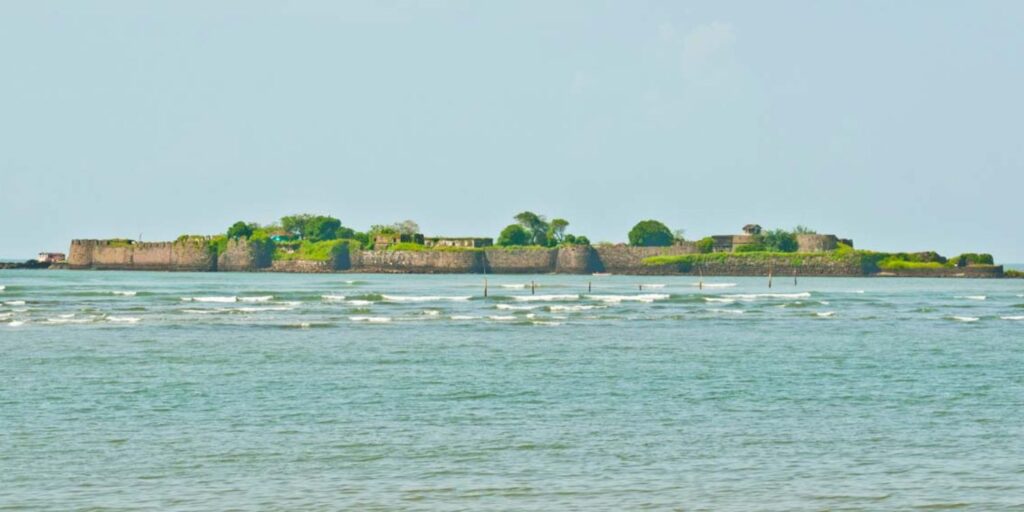Welcome to the Kolaba fort the picturesque shores of Alibag in the Konkan region of Maharashtra, India.
The illustrious Kolaba Fort is a testament to the region’s rich maritime history. This ancient fortress has long served as a formidable bastion strategically positioned amidst the Arabian Sea.
Guarding the coastal territories against invasions and offering a glimpse into India’s storied past. Accessible via a short boat ride from Alibag Beach, Fort beckons adventurers.
And history enthusiasts to explore its weathered ramparts and time-worn corridors. With a history dating back centuries, this architectural marvel bears witness to the ebb and flow of time.
Preserving tales of bravery and conquest within its sturdy walls. Today, Fort symbolizes historical significance and is a thriving tourist destination.
Drawing visitors from far and wide to immerse themselves in its rich heritage and scenic beauty. As one of Maharashtra’s cherished protected monuments, Fort continues to captivate hearts/minds.
Inviting all to unravel its mysteries and uncover the secrets of its storied past.
1. The architecture
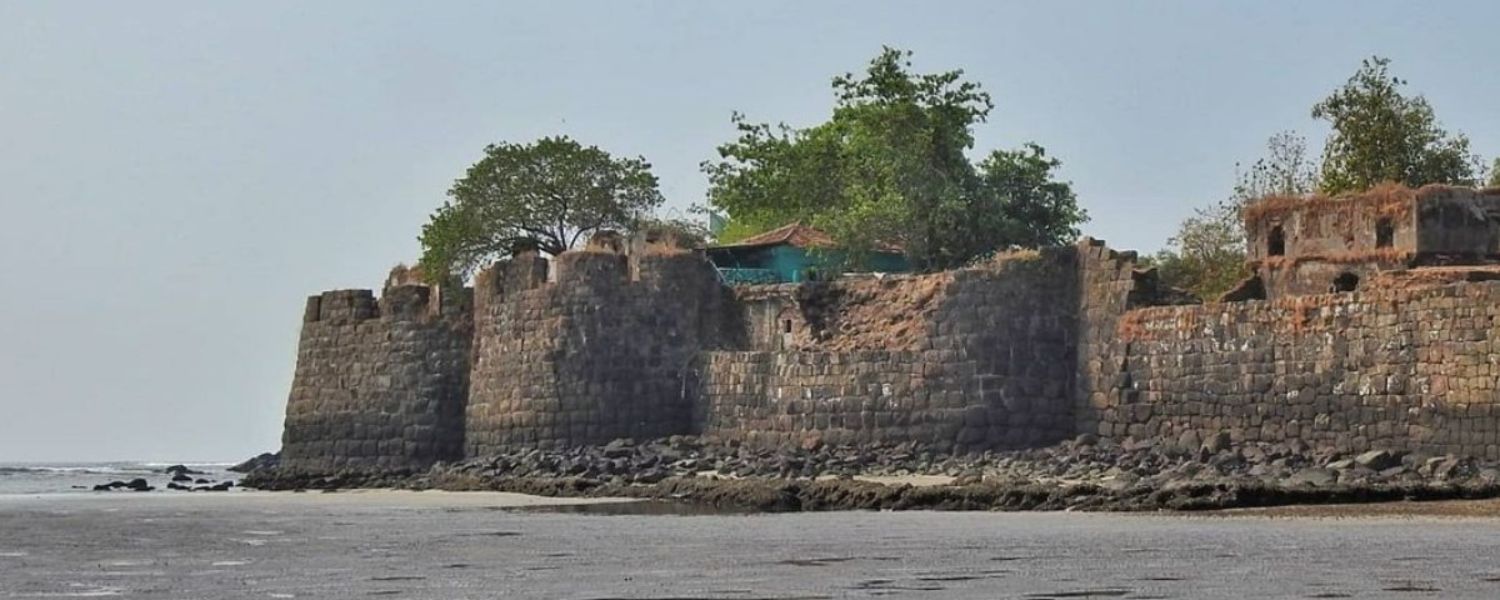
Nestled along the picturesque Alibag beach, the Fort is a timeless testament to India’s rich maritime history.
This ancient fortified structure is located just off the shores of Alibag in the Konkan region of Maharashtra.
Has captured the imaginations of tourists and historians alike for centuries.
Situated approximately 35 kilometers south of Mumbai, Fort beckons travelers with its intriguing architecture and storied past.
Constructed in the sea, the Fort sits 1-2 kilometers from the mainland, accessible by a narrow pathway during low tide.
Its strategic location made it a crucial maritime base during its heyday.
Visitors are greeted by imposing walls, bastions, and entrances that echo tales of battles and conquests from bygone eras.
The architecture of Fort showcases a blend of indigenous and colonial influences.
The Fort primarily uses locally sourced materials and has sturdy stone walls and intricately designed entrances.
Its bastions stand tall, offering panoramic views of the Arabian Sea and the surrounding landscape.
Today, Fort serves as more than just a relic of the past; it’s a thriving tourist destination and a protected monument under the care of local authorities.
Visitors flock to explore its historic corridors, marvel at its architecture, and soak in the serene coastal ambiance.
2. British Invasion
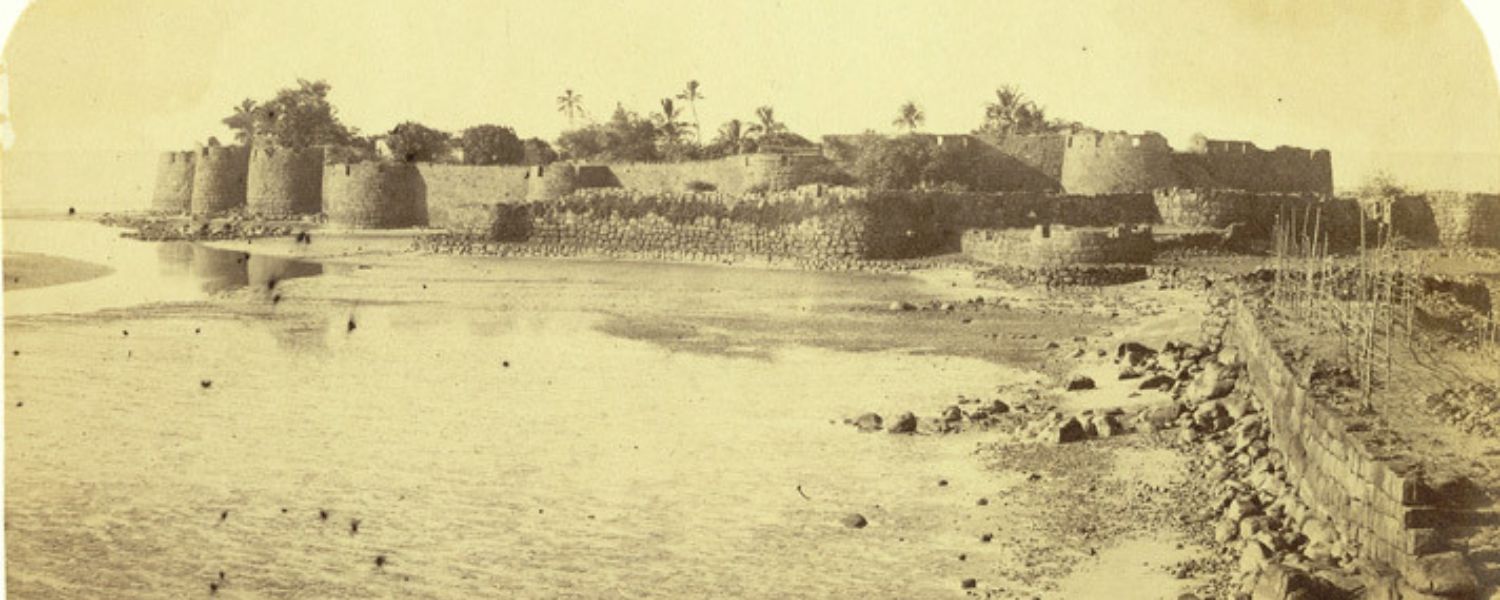
In 1729, the formidable Maratha naval commander Kanhoji Angre, who held sway over the seas along the western coast, passed away.
Following his demise, the Fort faced a period of vulnerability.
Subsequently, a fire ravaged the Pinjarra Bastion in the fort premises in a series of events, causing substantial damage to several historic structures.
This catastrophe left an indelible mark on the Fort’s history, symbolizing a shift in its fortunes.
Amidst the chaos, the British seized the opportunity to assert their regional dominance.
In 1842, they successfully took control of Fort, marking a significant turning point in its ownership and administration.
This event signaled the end of an era as the Fort transitioned from Maratha rule to British governance.
Despite the failed attacks and the subsequent change in ownership.
Fort remains a captivating symbol of resilience and heritage.
Drawing visitors from far and wide to marvel at its storied past and picturesque surroundings.
3. Things To See
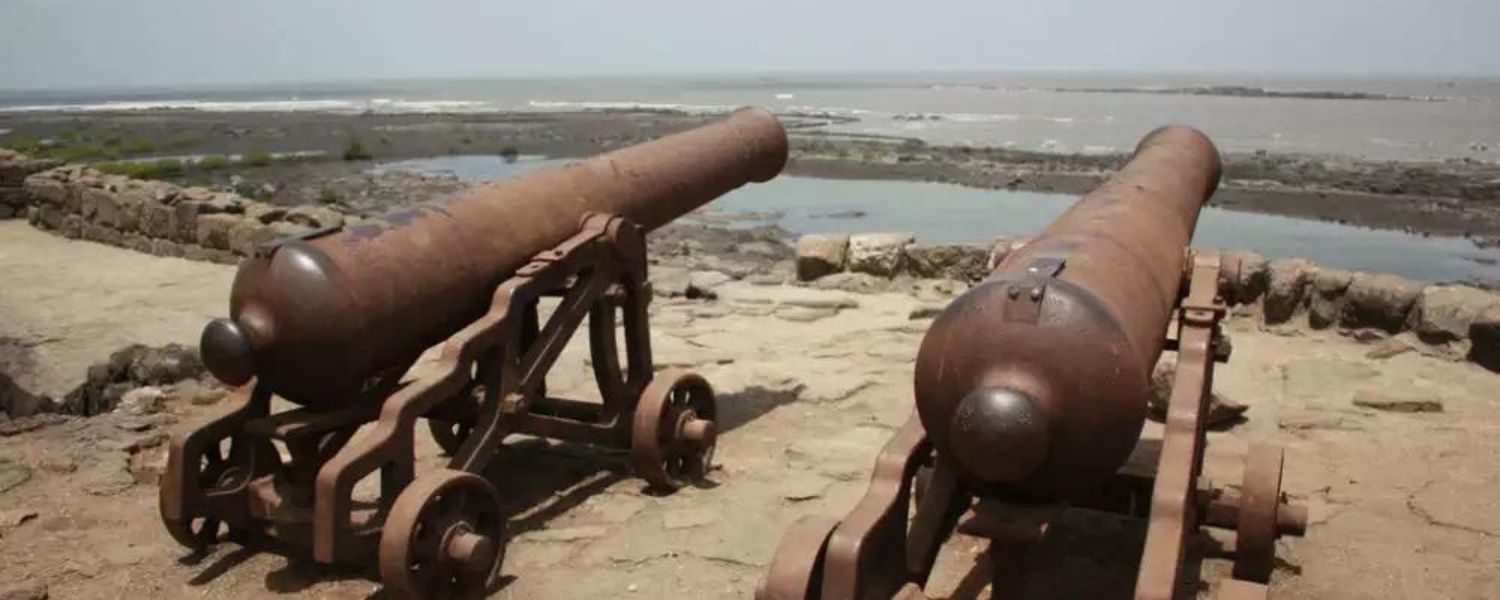
Kolaba Fort is a mesmerizing historical gem nestled in the Arabian Sea, offering breathtaking views and rich cultural experiences.
This magnificent Fort, perched on a small rock face, boasts architectural marvels that stand tall at 25 feet.
showcasing its builders’ extraordinary craftsmanship and engineering prowess.
As you stroll along the fort walls, centuries of history unfold through intricate carvings depicting elephants, peacocks, and tigers reminiscent of ancient battles and dynasties.
Despite its sea-bound location, Fort surprises visitors with a freshwater well, a testament to its ingenious design.
Exploring the Fort’s grounds, you’ll encounter remnants of ancient cannons, once formidable weapons used in defense against invaders.
Amidst the Fort’s grandeur, a handful of temples grace its premises, including the revered Siddhivinayak Temple.
constructed in 1759 by Raghoji Angre, alongside the Mahishasura and Padmavati temples.
Additionally, the presence of the dargah of Haji Kamaluddin Shah adds a touch of spiritual significance to this historical site.
4. Best Time To Visit

Situated off the coast of Alibaug in Maharashtra, Fort boasts a rich history and breathtaking views.
While this architectural marvel welcomes visitors throughout the year, November to July is the best time to explore its wonders.
These months offer the most favorable weather conditions, characterized by mild temperatures and clear skies.
The cool breeze harms your skin as you wander through the Fort’s ancient corridors but adds to the overall experience.
However, it’s essential to note that visiting during the monsoon months, from July to September, may not be the wisest choice.
The region faced heavy rainfall during this time, leading to high tides and potentially hazardous conditions for exploration.
Therefore, if you seek a safe and pleasant adventure, planning your trip outside of the monsoon season is best.
5. Tips For Visiting
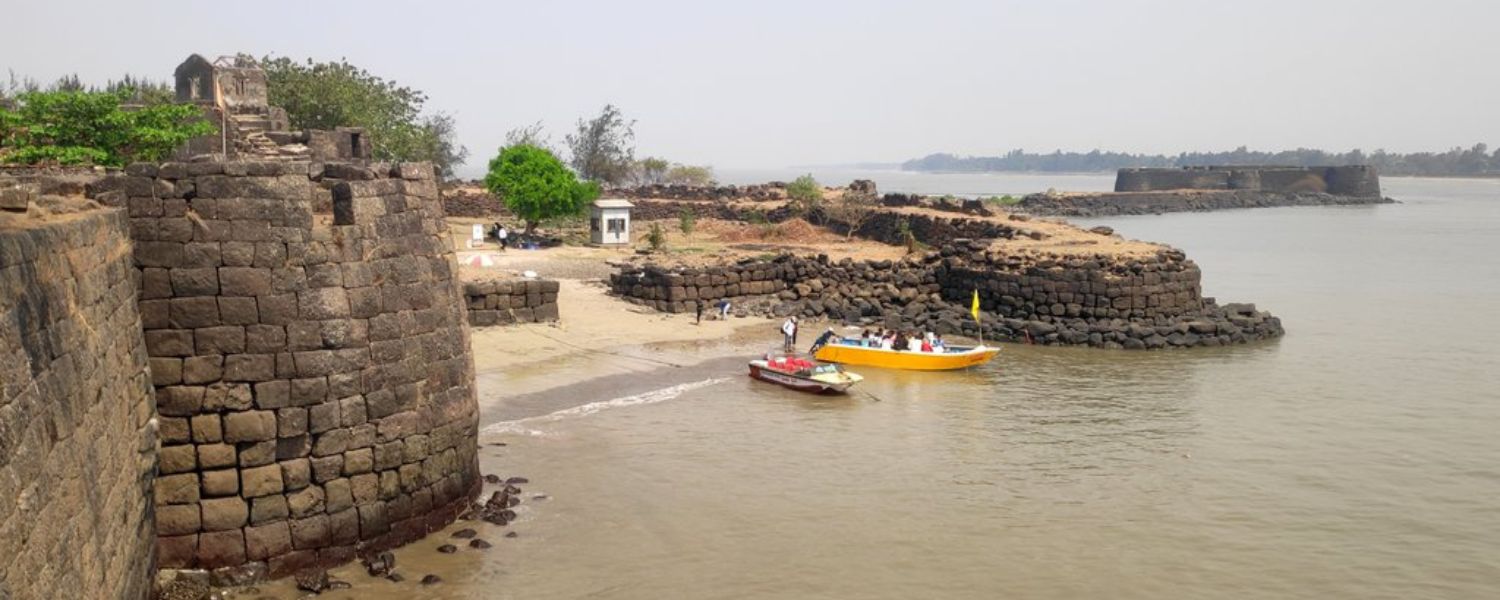
Fort with these essential tips for a memorable visit.
Situated off the shores of Alibaug in Maharashtra, India, Fort offers a glimpse into the region’s rich past.
Accessible by foot during low tides, the routes to the Fort submerge underwater during high tides, necessitating a boat ride for visitors.
Planning your visit according to the tide timings is crucial to ensure a hassle-free experience.
Additionally, for a unique and picturesque journey, consider hiring horse carts available along the beach, adding an extra charm to your adventure.
As you step onto the Fort, immerse yourself in its intriguing history and architectural grandeur.
Shivaji Maharaj built Fort in the 17th century as a strategic stronghold against maritime invasions.
Stroll along the Fort’s ramparts, offering fantastic views of the Arabian Sea and the nearby landscapes.
Don’t forget to capture the tremendous sundown from this vantage point, creating lasting memories of your trip.
While exploring the Fort, be mindful of its heritage value and preserve its integrity by avoiding littering or damaging structures.
Embrace the tranquility of this historic site, appreciating its significance in Maharashtra’s cultural tapestry.
Whether a history enthusiast, nature lover, or seeking a serene getaway.
Fort promises a captivating experience, seamlessly blending history, adventure, and natural beauty.
6. How To Reach
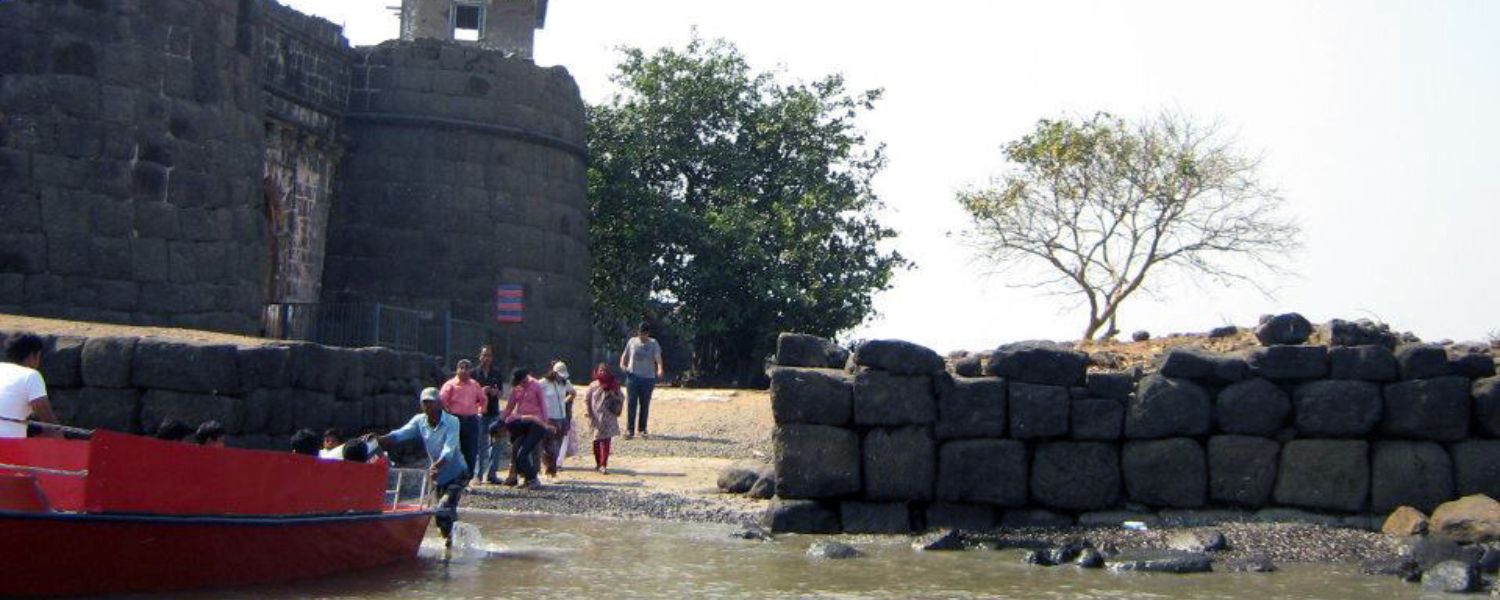
If you’re eager to explore the historic marvel of Fort and the nearby Shiva Jyotirlinga in Maharashtra.
Reaching this fascinating destination is straightforward.
Situated just 35 kilometers from Mumbai, Fort is easily accessible by sea, offering a delightful adventure for travelers.
From Mumbai, you can embark on speedboats or ferries that are available at the iconic Gateway of India.
Alternatively, if you’re coming from Alibaug, the nearest jetties in Mandwa and Rewas offer regular ferry services.
It is a scenic ride that takes about 45 minutes, operating from sunrise to sunset.
For those preferring road travel, Mumbai is the nearest major city, merely 100 kilometers away.
State transport buses operate daily from Mumbai, Pune, Kolhapur, and Nashik to Alibaug, providing convenient access.
The closest railway station is located in Pen, approximately 30 kilometers away.
Once you arrive in Alibaug, local transport options such as private taxis and autorickshaws are readily available.
From the shores of Alibaug, Fort lies at a distance of 1-2 kilometers.
During low tides, you can even wade through the waters to reach the Fort, adding a touch of adventure to your journey.
However, opting for a boat ride during high tides becomes necessary to access the fort premises safely.
With its rich history and picturesque surroundings, Fort awaits eagerly.
Explorers promise an unforgettable experience amidst its ancient walls and captivating vistas.
7. Role in Maratha History
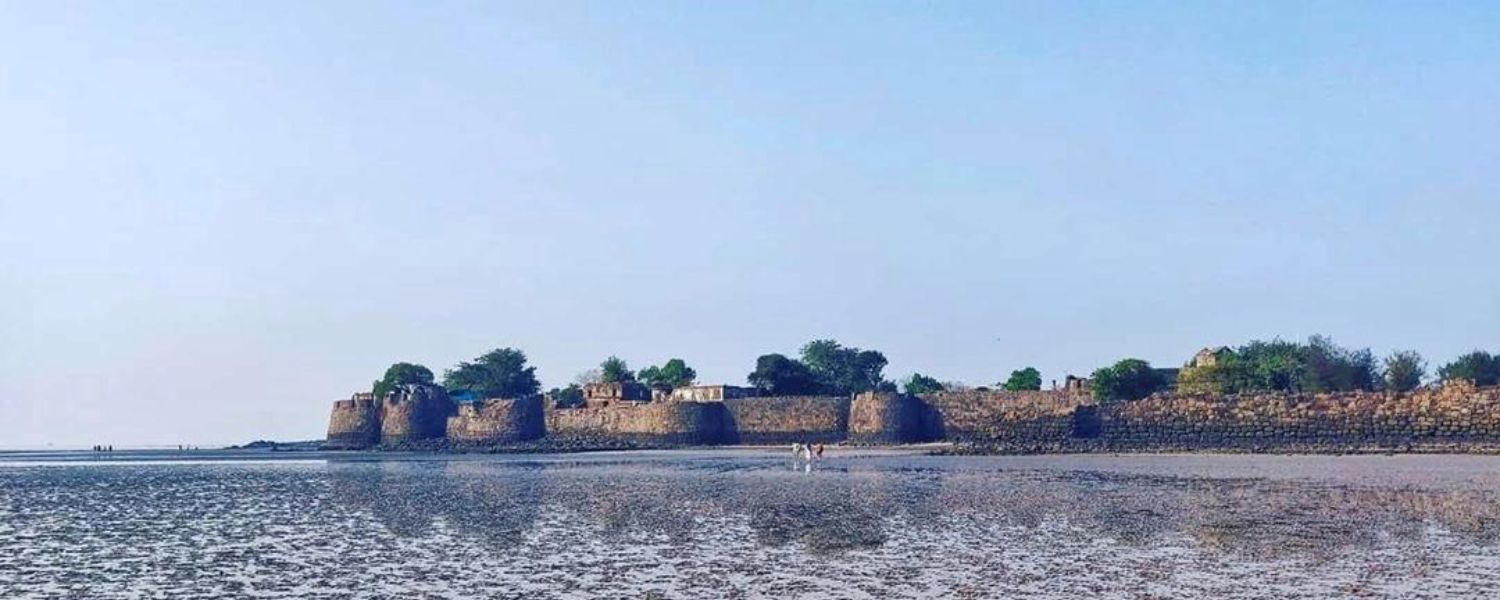
Kolaba Fort is a significant landmark in the rich tapestry of Maratha history.
Its construction commenced on March 19, 1680, marking the beginning of its storied legacy.
Initially fortified in 1662, it was transformed into a formidable naval station under Maratha ruler Chhatrapati Shivaji Maharaj’s vision.
The responsibility of overseeing its defenses fell into the capable hands of Darya Sarang and Mainak Bhandari.
Who played pivotal roles in its strategic operations.
Fort’s strategic location made it a linchpin in Maratha naval warfare as a launching pad for attacks on British ships.
Its robust defenses and strategic positioning made it a thorn in the side of colonial powers.
Symbolizing the Maratha Empire’s resilience and military prowess.
Throughout history, Fort witnessed numerous battles and sieges.
Each adds to its legend and cements its status as a bastion of Maratha’s strength.
Its significance extends beyond its physical structure.
It embodies the spirit of resistance against foreign domination during a crucial period in Indian history.
Today, Fort is a testament to the indomitable spirit of the Marathas and serves as a reminder of their contributions to India’s heritage and legacy.
Its walls echo with the stories of courage and sacrifice, etching its name into the annals of Maratha history for generations to come.
8. Events and Festivals

Nestled in the seaside town of Alibaug, Fort is a beacon of history and cultural vibrancy.
Throughout the year, this majestic Fort becomes more than just a historical landmark.
It transforms into a lively hub of festivities and celebrations, drawing locals and tourists alike.
At Fort, visitors can immerse themselves in myriad cultural events that showcase the heritage of Alibaug.
From captivating music and dance performances that echo through the ancient walls to vibrant art exhibitions that showcase local talent.
There’s always something exciting within the Fort’s confines.
One of the highlights of these events is the assortment of food festivals that tantalize taste buds with delicious local delicacies.
Visitors can savor traditional Maharashtrian cuisine while taking in breathtaking views of the Arabian Sea.
creating an unforgettable culinary experience.
These events entertain and educate, offering a glimpse into the customs/traditions that have shaped the region’s identity over the centuries.
Whether it’s a traditional dance performance or an insightful art exhibition.
each event at Fort provides a different opportunity to connect with the heart and soul of Alibaug’s cultural heritage of Maharashtra all jyotirlinga.
Conclusion
Kolaba Fort is a testament to India’s rich maritime history and architectural prowess.
Nestled along the pristine shores of Alibag beach, this ancient fortress has stood the test of time.
Weathering centuries of history and cultural evolution.
Its strategic location, just off the seaside of Alibag, highlights its significance as a fortified maritime base.
Once pivotal in safeguarding the region against invaders.
Today, Fort draws tourists and history enthusiasts, offering a glimpse into Maharashtra’s vibrant past.
The Fort is a national monument with well-maintained structures like temples, courtyards, and ramparts.
These structures generate an awe-inspiring feeling and take the visitors back to the era of brave battles and naval supremacy.
The Fort attracts many tourists and is a source of pride for the local community.
Its enduring legacy reminds us of India’s rich heritage and the importance of preserving our historical landmarks for future generations.
FAQ
Q. What is the story of Kolaba Fort?
A. Fort, situated off the coast of Alibag in Maharashtra, India, holds a rich historical narrative dating back to the 17th century.
The Fort was a strategic naval outpost initially built by Shivaji Maharaj, the legendary Maratha ruler, in 1680.
Over time, it witnessed several battles and changed hands between Marathas, Siddis, and the British.
each leaving its mark on its architecture and significance.
Q. When should you visit Kolaba Fort?
A. The ideal season for visiting Fort is from November to February, which marks winter.
During this time, the weather conditions are pleasant, and the sea is calm, resulting in a delightful exploration experience.
Q. Why is the Kolaba Fort called a sea fort?
A. Kolaba Fort is referred to as a sea fort because the Arabian Sea surrounds it.
Visitors can walk to the Fort from Alibag beach during low tide, making it a unique maritime attraction.
Q. What is the other name for Kolaba Fort?
Kolaba Fort is also known as Alibag Fort, owing to its proximity to the town of Alibag.
Q. Why is Kolaba Fort famous?
A. Fort is famous for its historical significance, stunning architecture, and amazing views of the Arabian Sea.
It is a testament to the region’s maritime history and strategic importance.
Q. Which Fort is in the water?
A. Fort is situated in the water, making it a must-visit place for history enthusiasts and nature lovers.
